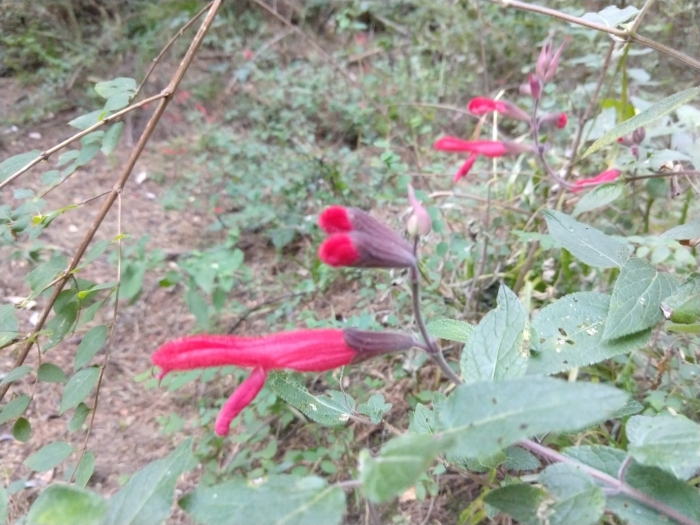Mexican Scarlet Sage
(Salvia fulgens)
Mexican Scarlet Sage (Salvia fulgens)
/
/

Francisco Emilio Roldán Velasco
CC BY 4.0
Image By:
Francisco Emilio Roldán Velasco
Recorded By:
Copyright:
CC BY 4.0
Copyright Notice:
Photo by: Francisco Emilio Roldán Velasco | License Type: CC BY 4.0 | License URL: http://creativecommons.org/licenses/by/4.0/ | Rights Holder: Francisco Emilio Roldán Velasco | Publisher: iNaturalist | Date Created: 2021-01-01T15:56:23-08:00 |


























Estimated Native Range
Summary
Salvia fulgens, commonly known as Mexican Scarlet Sage, is an evergreen subshrub native to the cloud forests and oak woodlands of Central and Southwest Mexico. It typically grows 50–100 cm (20–39 in) tall and 40–90 cm (16–35 in) wide. The plant is characterized by its vibrant, tubular, 3 cm (1 in) long red flowers that bloom in loose whorls, with a reddish-brown calyx persisting after the flowers drop. The flowers’ upper lip is adorned with red hairs that catch the morning dew, adding to the plant’s ornamental appeal. Occasionally, an inflorescence may reach up to 12 inches in length. The foliage consists of pale yellow-green, heart-shaped leaves, each about 1.5 in long by 1 in wide, which densely cover the plant.
Mexican Scarlet Sage is valued for its striking red flowers, which can add a splash of color to gardens and attract hummingbirds. It is commonly used in borders, as a specimen plant, or in pollinator gardens. This sage prefers full sun but can tolerate partial shade, and it requires well-drained soil with moderate moisture. While it is generally easy to maintain, it can be susceptible to root rot if overwatered or planted in poorly drained soils. It is not known to be invasive but should be monitored in areas with similar climates to its native range.CC BY-SA 4.0
Mexican Scarlet Sage is valued for its striking red flowers, which can add a splash of color to gardens and attract hummingbirds. It is commonly used in borders, as a specimen plant, or in pollinator gardens. This sage prefers full sun but can tolerate partial shade, and it requires well-drained soil with moderate moisture. While it is generally easy to maintain, it can be susceptible to root rot if overwatered or planted in poorly drained soils. It is not known to be invasive but should be monitored in areas with similar climates to its native range.CC BY-SA 4.0
Plant Description
- Plant Type: Shrub
- Height: 2-3 feet
- Width: 1-3 feet
- Growth Rate: Moderate
- Flower Color: Red
- Flowering Season: Summer, Fall
- Leaf Retention: Evergreen
Growth Requirements
- Sun: Full Sun
- Water: Medium
- Drainage: Medium
Common Uses
Bee Garden, Bird Garden, Butterfly Garden, Deer Resistant, Drought Tolerant, Fragrant, Groundcover, Hummingbird Garden, Low Maintenance, Rabbit Resistant, Showy Flowers
Natural Habitat
Cloud forests and oak woodlands
Other Names
Common Names: Cardinal Sage
Scientific Names: , Salvia fulgens, Salvia cardinalis, Salvia schaffneri, Piaradena fulgens, Salvia pendula, Salvia fulgens var. boucheana, Salvia incana, Salvia orizabensis, Salvia boucheana
GBIF Accepted Name: Salvia fulgens Cav.